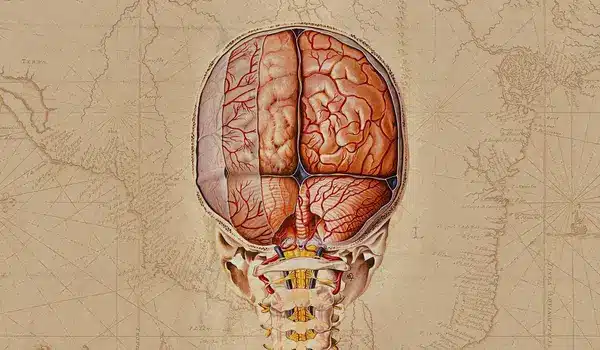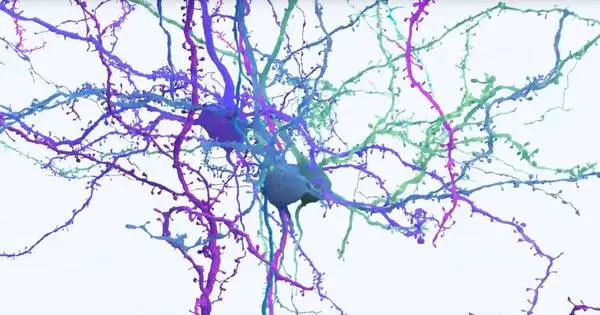A comprehensive cell atlas of a whole mammalian brain has been developed by researchers. This atlas serves as a map of the mouse brain, describing the kind, location, and chemical information of over 32 million cells as well as information on cell connectivity.
An international team of researchers has constructed a full-cell atlas of an entire mammalian brain for the first time. This atlas serves as a map of the mouse brain, describing the kind, location, and chemical information of over 32 million cells as well as information on cell connectivity. The mouse is the most often used vertebrate experimental model in neuroscience research, and its cellular map paves the door for a better understanding of the human brain – probably the world’s most powerful computer. The cell atlas also provides the groundwork for a new generation of precision treatments for those suffering from mental and neurological illnesses of the brain.
The findings were funded by the National Institutes of Health’s Brain Research Through Advancing Innovative Neurotechnologies® Initiative, or The BRAIN Initiative®, and appear in a collection of 10 papers published in Nature.
The mouse atlas has brought the intricate network of mammalian brain cells into unprecedented focus, giving researchers the details needed to understand human brain function and diseases.
Joshua A. Gordon
“The mouse atlas has brought the intricate network of mammalian brain cells into unprecedented focus, giving researchers the details needed to understand human brain function and diseases,” said Joshua A. Gordon, M.D., Ph.D., Director of the National Institute of Mental Health, a component of the National Institutes of Health.
The cell atlas details the types of cells found in each region of the mouse brain, as well as how they are organized within those regions. In addition to structural information, the cell atlas offers an exceptionally rich record of the cell’s transcriptome – the whole set of gene readouts in a cell that carries instructions for manufacturing proteins and other biological products.
The transcriptomic information included in the atlas is hierarchically organized, detailing cell classes, subclasses, and thousands of individual cell clusters within the brain.
The atlas also characterizes the cell epigenome – chemical modifications to a cell’s DNA and chromosomes that alter the way the cell’s genetic information is expressed — detailing thousands of epigenomic cell types and millions of candidate genetic regulation elements for different brain cell types.

Together, the structural, transcriptomic, and epigenetic information included in this atlas provide an unprecedented map of cellular organization and diversity across the mouse brain. The atlas also provides an accounting of the neurotransmitters and neuropeptides used by different cells and the relationship among cell types within the brain.
This information can be used as a detailed blueprint for how chemical signals are initiated and transmitted in different parts of the brain. Those electrical signals are the basis for how brain circuits operate and how the brain functions overall.
“This product demonstrates the power of this unprecedented, cross-cutting collaboration and paves the way for more precision brain treatments,” said John Ngai, Ph.D., Director of the NIH BRAIN Initiative.”Seven of the ten studies included in this collection are funded through the NIH BRAIN Initiative Cell Census Network (BICCN), and two are funded through the larger NIH BRAIN Initiative.”
The BICCN, a ground-breaking, cross-disciplinary effort to understand the brain’s cellular makeup, seeks to create a comprehensive inventory of the cells in the brain — where they are, how they develop, how they work together, and how they regulate their activity — in order to better understand how brain disorders develop, progress, and are best treated.
“By leveraging the unique nature of its multi-disciplinary and international collaboration, the BICCN was able to accomplish what no other team of scientists has been able to before,” said Dr. Ngai. “Now we are ready to take the next big step — completing the cell maps of the human brain and the nonhuman primate brain.”
The BRAIN Initiative Cell Atlas Network (BICAN) is the next step in the NIH BRAIN Initiative’s quest to comprehend the mammalian brain’s cells and cellular activities. BICAN, along with two other large-scale projects, the BRAIN Initiative Connectivity Across Scales and the Armamentarium for Precision Brain Cell Access, aims to revolutionize neuroscience research by illuminating foundational principles governing the circuit basis of behavior and informing new approaches to treating human brain disorders.















